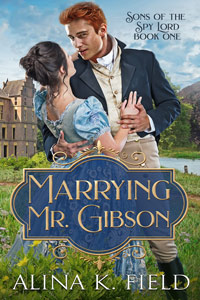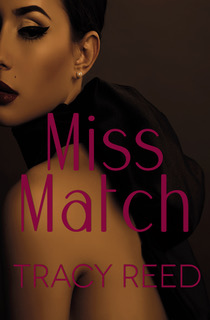A Twist of Lemon – Isabel Swift
January 24, 2011 by Isabel Swift in category From Isabel Swift tagged as Cocktails, writingHave you ever had a cocktail? I remember when I was younger being curious about the mystery of mixing drinks, and watching and learning from my father. Cocktails were these magic elixirs, complex, mysterious, alluring. Cooking held little interest for me, but making the right twist of lemon was an art I delighted in learning.
My father enjoyed a martini and took pleasure in the details. The right glass, the balance of tastes, the brand, crushing the ice in his hand with a spoon to get the right size slivers, the perfect chill, the right additions. Everything had impact. Everything mattered. And when I would taste the drink, I had to acknowledge that indeed, it did.
As I recall, we were a lemon twist family. I don’t think I learned of olives or onions until some much later date, though limes and even an occasional mint sprig would find its way into a seasonal libation.
But the lemon twist was what made the average drink exceptional.
It started with finding a firm, fresh lemon, with unblemished substantial skin. Not for us those thin-skinned lime-look-alikes. A small, sharp knife was needed and a lengthwise strip would be cut from stem to stern. A bit of white was acceptable, but you were looking to get a nice 1/4 inch (finger wide) ribbon of the yellow top coat, covered with tiny pores.
You’d take that ribbon and squeeze it over the surface of your completed cocktail, white inside toward you, the outer skin facing the drink like—my father would gleefully explain—you were squeezing blackheads. And oil did indeed emerge from the peel squeezing, creating a film of lemon essence, an oil slick on the surface of the drink.
You would then gently sweep the perimeter of the glass with the outside of the peel and drop it into the drink (twisting the peel would deliver similar oil-inducing pressure, but is less thorough, in my opinion). As my father noted, one didn’t really taste much after the first sip of a drink. The chill, the alcohol, would often take over, so the fact the oil essence didn’t last much beyond that initial sip didn’t matter. What mattered was that first sip was exquisite, sparkling, aromatic, heady.
However my experience with almost all ordered cocktails is dreadfully disappointing in this area. Most bartenders take the words “with a twist” at face value, and some variety of a curlicue of lemon appears, extracted by an assortment of designer bar implements and it sits decoratively on the edge of your drink. Useless as teats on a bull.
The whole point of a twist of lemon is to add a touch of fresh lemon oil to your drink, for reasons of taste. Not solely to stick a piece of lemon rind in your drink! But almost everyone misses the point. They make a living doing this, and they still don’t have their eye on the donut, the key deliverable, the “beef” and not the bun.
Missing—or just not understanding—the point is not a new issue. It can be a problem for aspiring writers too, who may dutifully following the letter Vs the spirit of instructions. Doing something without really understanding why it needs to be done, what value it offers, can lead you astray. It’s often why editorial instructions, tip sheets, etc. can sometimes be non-existent, minimalist or vague—because the requesters know that some information can mislead instead of inform.
In fact, information can distract you from focusing on the point. As an adviser, you really want the creator to understand that it’s all about achieving the goal: creating the feeling, having the impact, making the experience happen for the recipient. Not (necessarily) about taking each step correctly, following rules, or delivering on the surface requirements, but not the substance. Instructions or information can be helpful, but when it comes down to it, the question will always be: is it delicious? Do I want to keep drinking (or reading, or whatever).
So if you’re having trouble making your text behave, now at least now you’ll know what to add to that beverage you’re going to be fixing yourself!
Do it with a twist.
0 0 Read moreHow thankful are you? Thoughts on talking turkey from Isabel Swift
November 25, 2010 by Isabel Swift in category From Isabel Swift tagged as Thank you notes, ThanksgivingSuddenly, after complaining about others, she realized she’d been just as guilty. She wondered if the statute of limitations had expired, but in my opinion thanks have no expiration date. You can send a thank you years later, and it will still be fresh—and possibly even more appreciated. Go for it. And she did.
Learning from one of my favorite things–Isabel Swift
October 24, 2010 by Isabel Swift in category From Isabel Swift tagged as reading, teaA visit by an avid tea drinker gave me the excuse to expound on my fondness for my Alfi. In assessing my tea drinking habits, I realized there were many similarities with my romance reading habits! Like many romance readers (and tea drinkers), I have specific tastes, likes and dislikes. Some I can be quite intransigent about, others more open-minded.
As a romance reader, I connected, then expanded my reading in the genre in a similarly tentative manner–first Austen, then Regencies, then a fearful exploration into historicals and contemporaries when demand far exceeded supply.
Thinking about the visceral and physical aspects of tea helped me understand my (and perhaps other reader’s) reading process. Sometimes trying a new tea opens a whole new world–but if you’re conservative, it takes being forced to try something new in order to get you off the tried and true. For me with tea, it was being served a delicious new type at a restaurant. With reading, my reading world has been expanded by gift books, a friend’s vociferous recommendation, or a desperation buy when travelling….
A new format–tea bags, a thermal pot–opens up a new drinking experience and new opportunities. I think of audio books, eBooks, mobile and eReaders in that vein. And sometimes the issue is expectations: if I don’t think of this drink as tea, but open my mind and consider it just as a hot beverage–does it taste good? So for me, I’ve been able to explore Chai (a bit). And to connect the tea/reading experience, to enjoy urban fantasy and other relationship novels that include romance, but are not Romances.
What–and how–have your horizons been expanded?
0 0 Read moreIsabel Swift comments on Summer Reading
August 24, 2010 by Isabel Swift in category From Isabel Swift tagged as Henry James, Summer readingI was listening to my itunes podcast from The New Yorker…
(Side note: many free podcasts can be downloaded and enjoyed @ iTunes. I just add it to my iPod, but if you have a smartphone with MP3 player, think you can download them there. All kinds of free content–learn about music, cooking, manners, philosophy, comedy, news, whatever).
…and one of the stories was about this out-of-work kid who told everyone that he was reading great books over the summer & was delighted to find everyone was very impressed. No, he wasn’t actually reading any, but I decided this was a worthy goal and I should start filling in the chinks and read stuff I had never gotten around to reading.
I thought I’d start with one classic, one recent literary type bestseller. My first toe in the water: PORTRAIT OF A LADY/Henry James & A HEARTBREAKING WORK OF STAGGERING GENIUS/Dave Eggers.
My rules are that you can have an opinion about a book you’ve read, but can’t have an opinion about the author unless you’ve read at least 3 of their books. It seems fair.
So I found AHWOSG a bit tedious–perhaps colored by having seen Eggers on panels at conferences. And Henry James, who I had never read (yes, watched Wings of the Dove, though my enjoyment was colored by the uncanny resemblance of Daniel Day Lewis in that role to my older brother). Portrait seemed a good start–one of his more well known novels, and the heroine’s name was Isabel. Can’t get more relevant than that!
OMG. It was a fairly hard slog. Then I realized I couldn’t complain about Henry James because I hadn’t read my requisite 3 books. Back to the Library. Wings of the Dove was just too long, and I wasn’t sure I wanted to sit through that story again. So I went with Washington Square–short, but as the introduction notes, not one of his more popular stories. And for good reason. I was one book away from an opinion. Luckily, there was Turn of the Screw–famous (I’d even seen the opera) and a novella! They even had to toss in a couple of short stories to fill the book out.
I was off an running. Well, if you’ve ever read James (I can now say that) “running” is not a word one would associate with his prose!
Despite some very active ghosts, TOTS (cute, eh?) was fairly tough going. But I needed to be able to have an author opinion! I even read the short stories. Also a good bit of the various scholarly preambles. Holy Toledo, if they don’t turn you off reading the book, nothing will. In fairness, I actually really like getting a sense of context, a quick cliff notes on the writer, the history, the critical thought. But obviously, there’s a similarity between the writer’s style and his or her academic fans, so prefaces were a bit of a slog too.
OK, here’s my assessment. After really not getting it for 3 novels (what is the big deal with this guy, etc.), the penny finally dropped thanks to the very last short story I read, “The Jolly Corner.” Whew! I could have an opinion that wasn’t just HUH?
So what’s the big deal? I haven’t done research beyond the above fairly pathetic efforts, but here are my insights.
First, he seems to be one of the first writers to deeply explore a sense of the character’s conscious, their emotional makeup and the psychological causes behind their actions. Freud was born 13 year after James & lived over 20 years longer, but there’s a strong connection with the birth of psychology. That seems pretty big as a new writing vision.
He also straddled the 19th and 20th centuries and offers a well rendered vision of the sense of past graciousness, limitations and social norms and proprieties that were being broken down, but still were powerful forces in an aristocratic or wealthy life. “The Jolly Corner” really presents a vivid metaphor of a man caught between two worlds, trying to find himself. Finishing it, I actually felt warmly towards James, though he definitely read as being a bit mysongenistic, which can be irritating.
So now that I’ve explained James, what’s on your summer reading list?
0 0 Read moreIsabel Swift’s Hyperbolic Coral Reef
July 29, 2010 by Isabel Swift in category From Isabel Swift tagged as Hyperbolic Coral Reef, ProjectsYou may, perhaps, be wondering just what the Hyperbolic Coral Reef is?
So glad you asked!
It’s a project started in Australia by two crocheting sisters seeking to call attention to the destruction of the Great Barrier Reef.
Interestingly, there’s a mathematical angle to all this. I will likely not get this entirely right, but basically for some time mathematicians denied there was a hyperbolic function until Mr Vincenzo Riccati and Johann Heinrich Lambert came up with it in 1760. This despite the fact that many coral grow hyperbolically, so there were examples right under their nose (or toes).
And you can crochet a hyperbolic function by simply creating a chain and doubling it for every stitch–example below:
It was a powerful visual and experience to remind me you can start with something very simple–a single chain stitch. Then do something very simple–double it. And if you continue to add these simple building blocks, you can create something of amazing complexity–perhaps even beauty. Just think about the single cell dividing and dividing and what remarkable organism it can come up with!
The Smithsonian Community Reef is a satellite of the worldwide Hyperbolic Crochet Coral Reef Project created by Margaret and Christine Wertheim of the Institute For Figuring in Los Angeles. It was made possible through the support of the Quiksilver Foundation, the Embassy of Australia, and the Coral Reef Alliance. Find out more about Margaret and Christine Wertheim and the Institute For Figuring in Los Angeles here, and their Hyperbolic Crochet Coral Reef Project here. Find out more about the upcoming exhibition of the Hyperbolic Crochet Coral Reef and Smithsonian Community Reef at the National Museum of Natural History on the Museum’s Smithsonian Community Reef Temporary Exhibitions Page. To be included on this e-mail circulation list (or removed from it) please contact sicommunityreef@yahoo.com.
Affiliate Links
A Slice of Orange is an affiliate with some of the booksellers listed on this website, including Barnes & Nobel, Books A Million, iBooks, Kobo, and Smashwords. This means A Slice of Orange may earn a small advertising fee from sales made through the links used on this website. There are reminders of these affiliate links on the pages for individual books.
Search A Slice of Orange
Find a Column
Archives
Featured Books
MARRYING MR. GIBSON
She won't be forced into marriage to a nobleman's by-blow. He won't be trapped into marriage by a father he's never known.
More info →
FREYA Viking Glory Book Two
What happens when an immovable object meets an unstoppable force? Sparks fly and love blooms.
More info →MISS MATCH
What happens when the matchmaker inadvertently gets matched while matching someone else?
More info →ILONA’S WOLF
Imagine a world filled with magic, a tormented knight, a damsel in distress, an evil sorcerer...
More info →Newsletter
Contributing Authors
Search A Slice of Orange
Find a Column
Archives
Authors in the Bookstore
- A. E. Decker
- A. J. Scudiere
- A.J. Sidransky
- Abby Collette
- Alanna Lucus
- Albert Marrin
- Alice Duncan
- Alina K. Field
- Alison Green Myers
- Andi Lawrencovna
- Andrew C Raiford
- Angela Pryce
- Aviva Vaughn
- Barbara Ankrum
- Bethlehem Writers Group, LLC
- Carol L. Wright
- Celeste Barclay
- Christina Alexandra
- Christopher D. Ochs
- Claire Davon
- Claire Naden
- Courtnee Turner Hoyle
- Courtney Annicchiarico
- D. Lieber
- Daniel V. Meier Jr.
- Debra Dixon
- Debra H. Goldstein
- Debra Holland
- Dee Ann Palmer
- Denise M. Colby
- Diane Benefiel
- Diane Sismour
- Dianna Sinovic
- DT Krippene
- E.B. Dawson
- Emilie Dallaire
- Emily Brightwell
- Emily PW Murphy
- Fae Rowen
- Faith L. Justice
- Frances Amati
- Geralyn Corcillo
- Glynnis Campbell
- Greg Jolley
- H. O. Charles
- Jaclyn Roché
- Jacqueline Diamond
- Janet Lynn and Will Zeilinger
- Jaya Mehta
- Jeannine Atkins
- Jeff Baird
- Jenna Barwin
- Jenne Kern
- Jennifer D. Bokal
- Jennifer Lyon
- Jerome W. McFadden
- Jill Piscitello
- Jina Bacarr
- Jo A. Hiestand
- Jodi Bogert
- Jolina Petersheim
- Jonathan Maberry
- Joy Allyson
- Judy Duarte
- Justin Murphy
- Justine Davis
- Kat Martin
- Kidd Wadsworth
- Kitty Bucholtz
- Kristy Tate
- Larry Deibert
- Larry Hamilton
- Laura Drake
- Laurie Stevens
- Leslie Knowles
- Li-Ying Lundquist
- Linda Carroll-Bradd
- Linda Lappin
- Linda McLaughlin
- Linda O. Johnston
- Lisa Preston
- Lolo Paige
- Loran Holt
- Lynette M. Burrows
- Lyssa Kay Adams
- Madeline Ash
- Margarita Engle
- Marguerite Quantaine
- Marianne H. Donley
- Mary Castillo
- Maureen Klovers
- Megan Haskell
- Melanie Waterbury
- Melisa Rivero
- Melissa Chambers
- Melodie Winawer
- Meriam Wilhelm
- Mikel J. Wilson
- Mindy Neff
- Monica McCabe
- Nancy Brashear
- Neetu Malik
- Nikki Prince
- Once Upon Anthologies
- Paula Gail Benson
- Penny Reid
- Peter J Barbour
- Priscilla Oliveras
- R. H. Kohno
- Rachel Hailey
- Ralph Hieb
- Ramcy Diek
- Ransom Stephens
- Rebecca Forster
- Renae Wrich
- Roxy Matthews
- Ryder Hunte Clancy
- Sally Paradysz
- Sheila Colón-Bagley
- Simone de Muñoz
- Sophie Barnes
- Susan Kaye Quinn
- Susan Lynn Meyer
- Susan Squires
- T. D. Fox
- Tara C. Allred
- Tara Lain
- Tari Lynn Jewett
- Terri Osburn
- Tracy Reed
- Vera Jane Cook
- Vicki Crum
- Writing Something Romantic
Affiliate Links
A Slice of Orange is an affiliate with some of the booksellers listed on this website, including Barnes & Nobel, Books A Million, iBooks, Kobo, and Smashwords. This means A Slice of Orange may earn a small advertising fee from sales made through the links used on this website. There are reminders of these affiliate links on the pages for individual books.








































